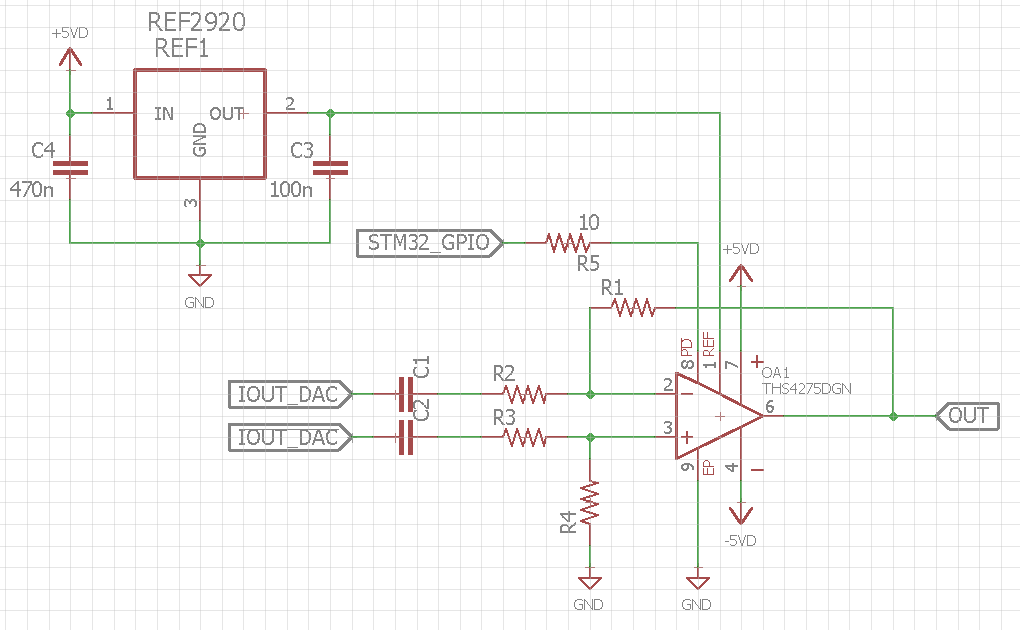Other Parts Discussed in Thread: REF2920, INA826S
Hi,
I'm using the THS4275 in combination with a REF2920. The REF 2920 has an output voltage of 2.048 V and is attached to the opamps REF pin. The opamp is operated in dual supply mode with +5V and -5V.
According to page 23 in the datasheet, the opamp should be enabled for a voltage larger then (2.048 V - 1V) = 1.048 V and disabled for a voltage below (2.048 V - 1.7 V) = 0.348 V.
I'm using a microcontroller output pin in push-pull mode with logic levels of 0 V and 1.8 V, unfortunately it is not possible to enable the opamp with the 1.8 V.
By using a !PD! - voltage of 5 V, the opamp is enabled.
Have I overlooked something in the datasheet?
BR


